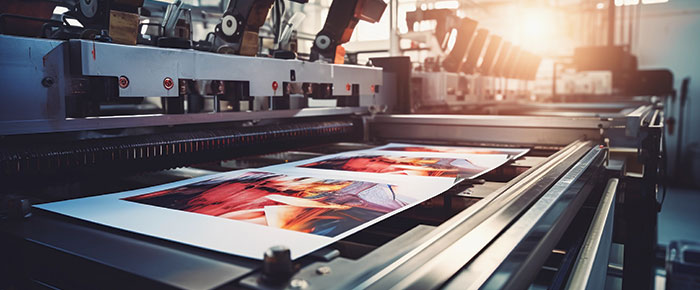 Zebra Technologies is a worldwide leading manufacturer of thermal-transfer and RFID printers. Over the last few years, they carried out a Warehouse Vision Study to keep up with the evolving landscape of warehouse technologies and to discern the needs and motivations of associates and decision-makers throughout many different industrial sectors. Their most recent study was performed in 2023, comprising a survey of over 1,400 IT and operational decision-makers, to shed light on a host of topics, from warehouse modernization to wide-scale automation.
Zebra Technologies is a worldwide leading manufacturer of thermal-transfer and RFID printers. Over the last few years, they carried out a Warehouse Vision Study to keep up with the evolving landscape of warehouse technologies and to discern the needs and motivations of associates and decision-makers throughout many different industrial sectors. Their most recent study was performed in 2023, comprising a survey of over 1,400 IT and operational decision-makers, to shed light on a host of topics, from warehouse modernization to wide-scale automation.
Modernization remains a priority for warehouses
In Zebra’s Warehousing Vision Study, the clear majority, up to 73% of respondents, said that within the next year, they have or will be accelerating modernization in their warehouses. A similar proportion, 69%, said they plan to increase funding for their existing plans. This is in addition to expected increases of 19% by 2028 in the average size of facilities and 39% in the global average number, along with increasing average investments in technology of ~500,000 USD from 2022 to 2023. All this despite the size and number of facilities showing overall decreases during that same period. So, despite the current downturn in growth, manufacturers said they are still set to improve flexibility and efficiency in the long term.
Warehouse leaders want to increase warehouse visibility
Warehouse visibility is essential to enhancing efficiency. Improved data visibility via automation is a key method companies can increase productivity while minimizing errors, including inventory inaccuracies and out-of-stocks. According to the survey, 82% of respondents thought enhanced visibility could ameliorate staff and asset utilization. Technologies used to improve visibility, such as RFID and barcode labels, can directly increase profitability, something that the respondents appeared to take note of. In the survey, there was a clear increase from 2023 to 2024 in those who planned to implement sensor technology in the warehouse. Among specific technologies the respondents planned to implement, RFID tags and sensors were clear favorites, with 81% stating they would integrate them by 2024.
Performance still needs to be improved
As warehouse accuracy should improve from year to year, so too should the pressure to enhance performance to satisfy customer expectations. Zebra’s survey detailed these worries, with 79% of respondents voicing concerns about managing workloads and high-stress levels to meet their goals. One challenge to meeting these goals, addressed by the survey, included service level agreements (SLAs), with 81% agreeing that missed SLAs imposed a high financial burden and should be addressed promptly. The primary drivers of error rates that ultimately lead to missed SLAs included sorting and packing (47%), order picking (46%), and put-away (43%).
Automation is valued… but not at the expense of workers
Automation is key in enhancing efficiency, with 69% of respondents stating they will automate workflows by 2024. However, the survey also showed that these technologies do not need to replace human workers. Instead, collaborative robots were thought of as a way to improve the capabilities of front-line workers, while also shifting them towards customer-centric, high-value tasks. According to the study, 86% of associates and 88% of decision-makers noted that implementing warehouse technologies, robotics, and devices should help attract and retain workers. To wit, 55% of respondents thought bringing in qualified workers was a key labor challenge, with 54% stating that training takes too long and 45% stating it is difficult to keep associates content with their work. Thus, automation appears to play a role in enhancing workflows and maintaining employees engagement and motivation.
Overall, the survey showed there is movement towards utilizing modernization and automated technologies throughout warehouses, in order to improve productivity, eliminate errors, and increase profitability. With technologies like RFID and barcode labels, scanners, and automated machines, it is likely that the companies surveyed, as well as others worldwide, will become capable of reaching these goals and meeting the demands of growing customer expectations.

